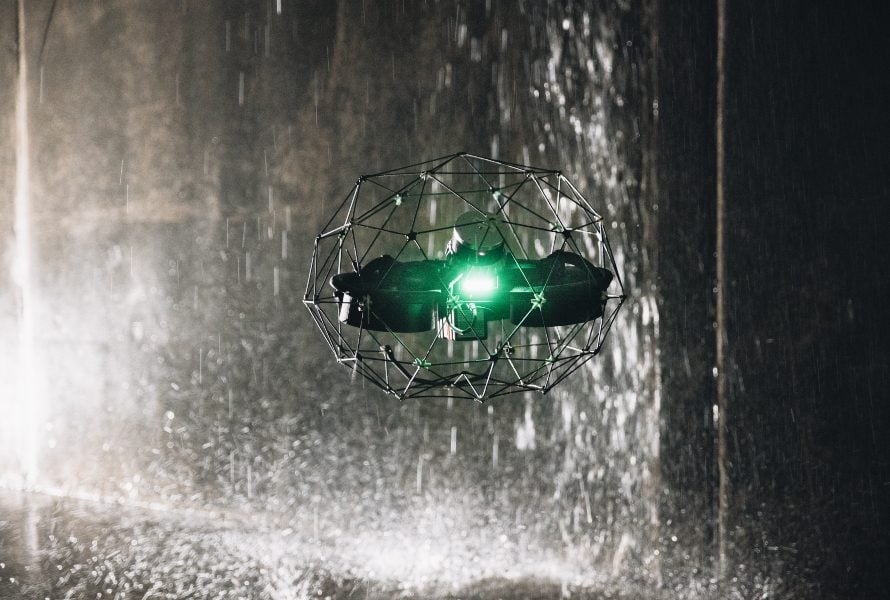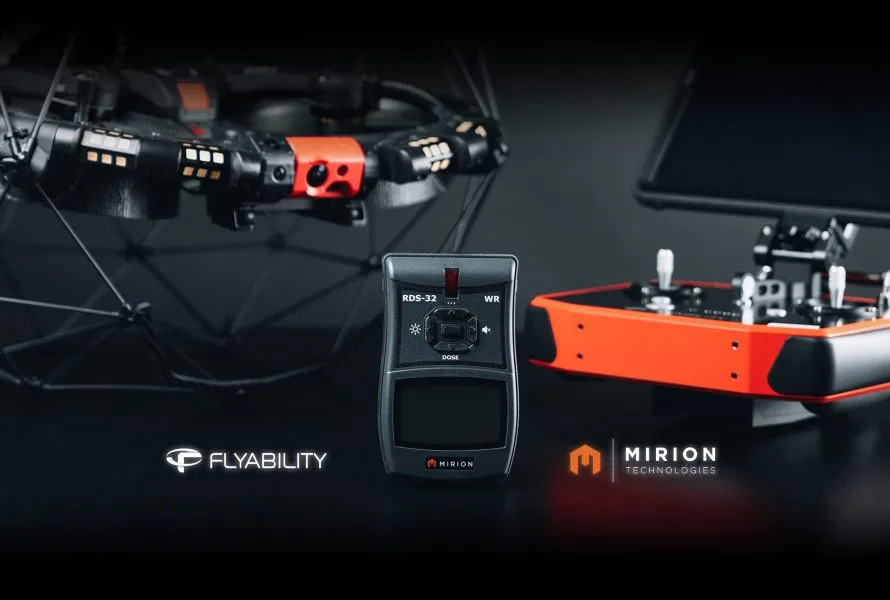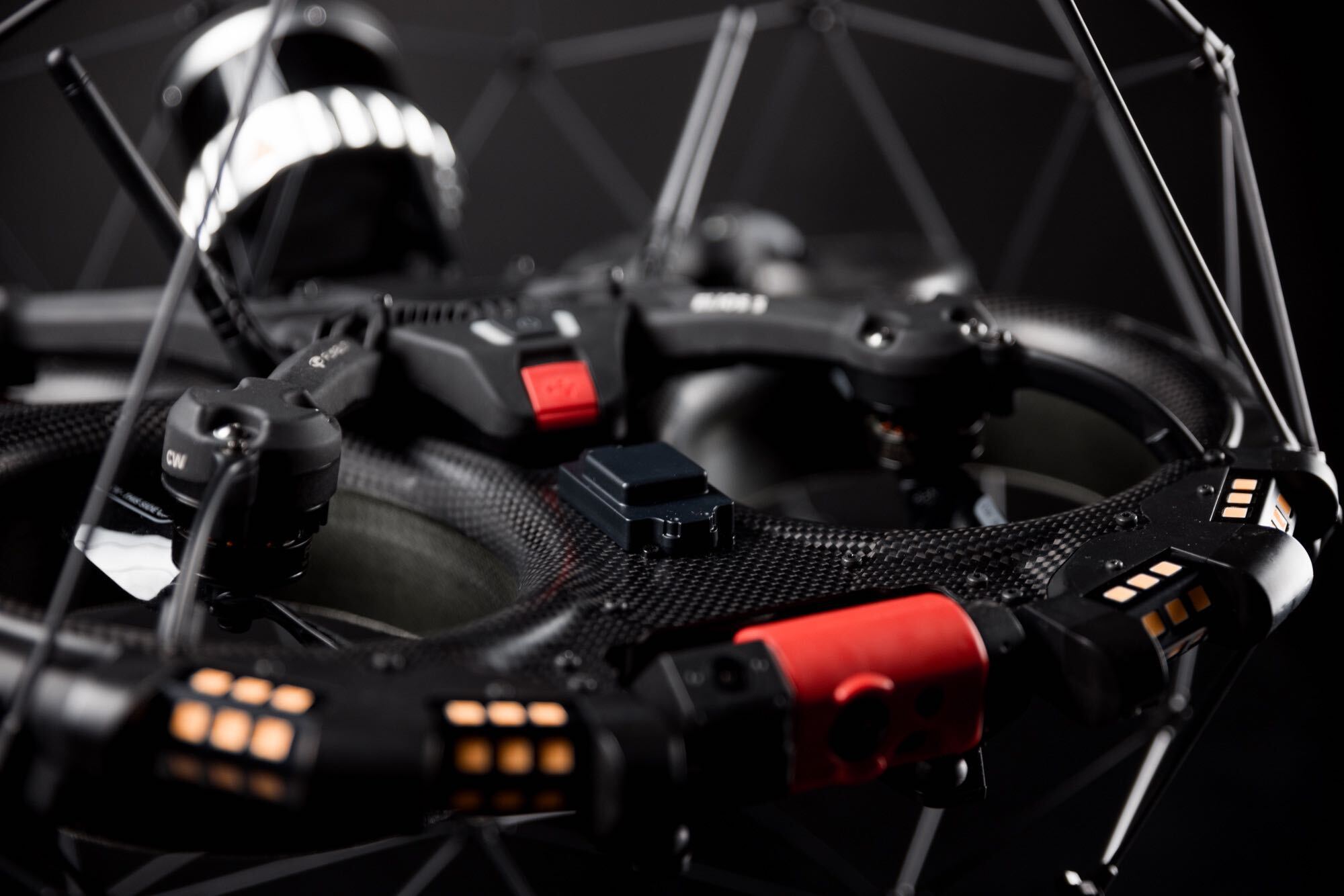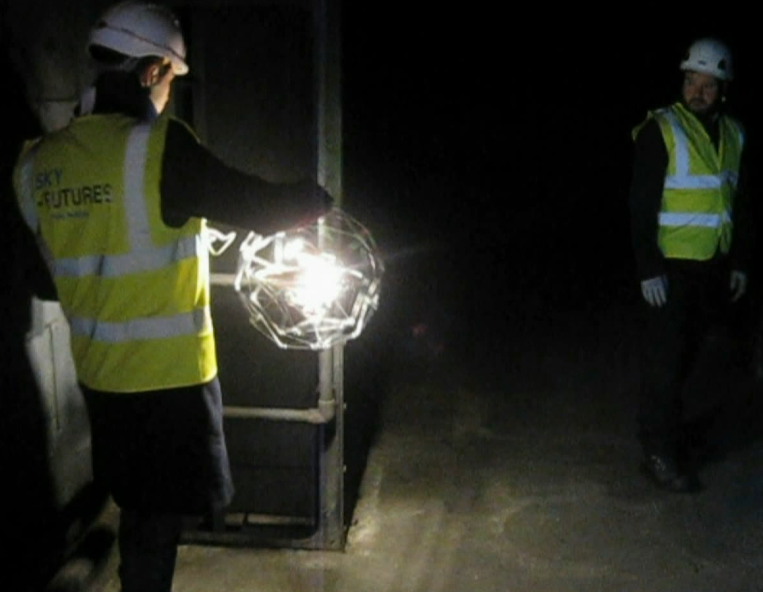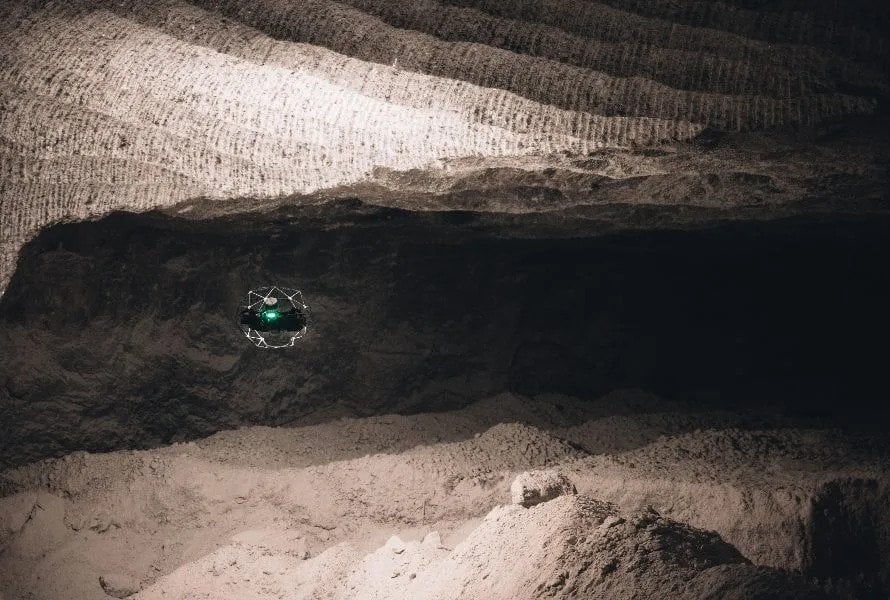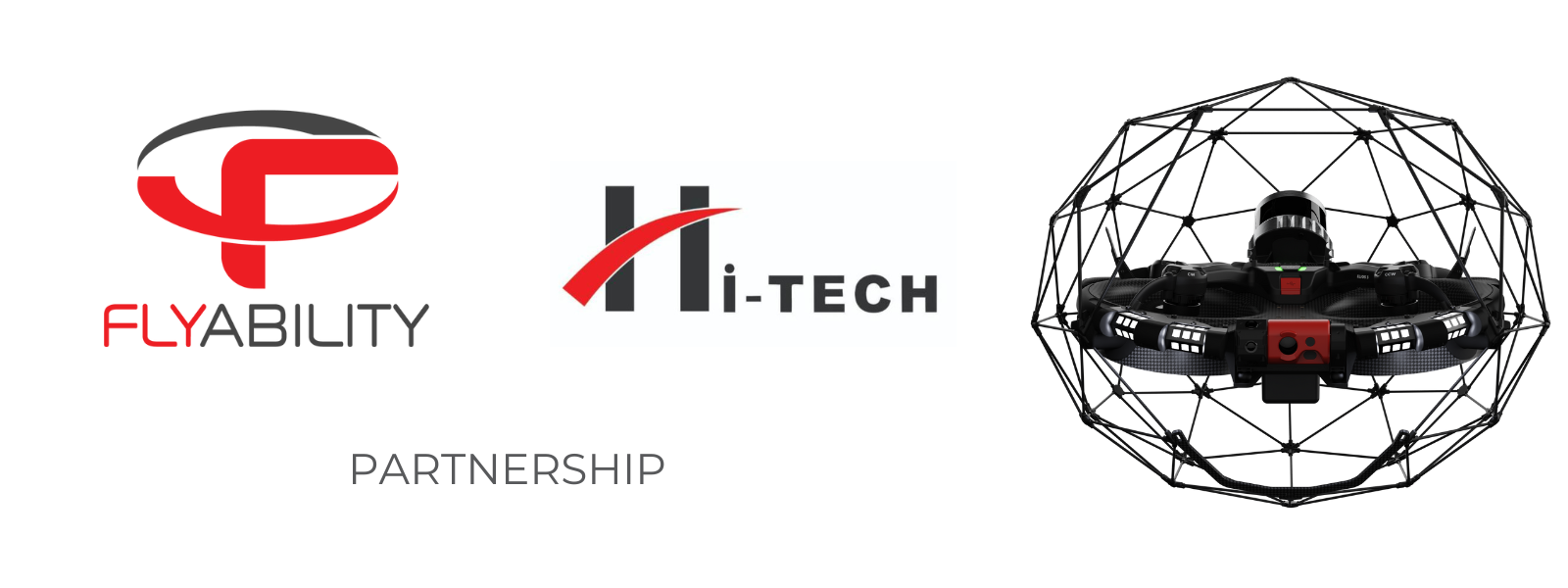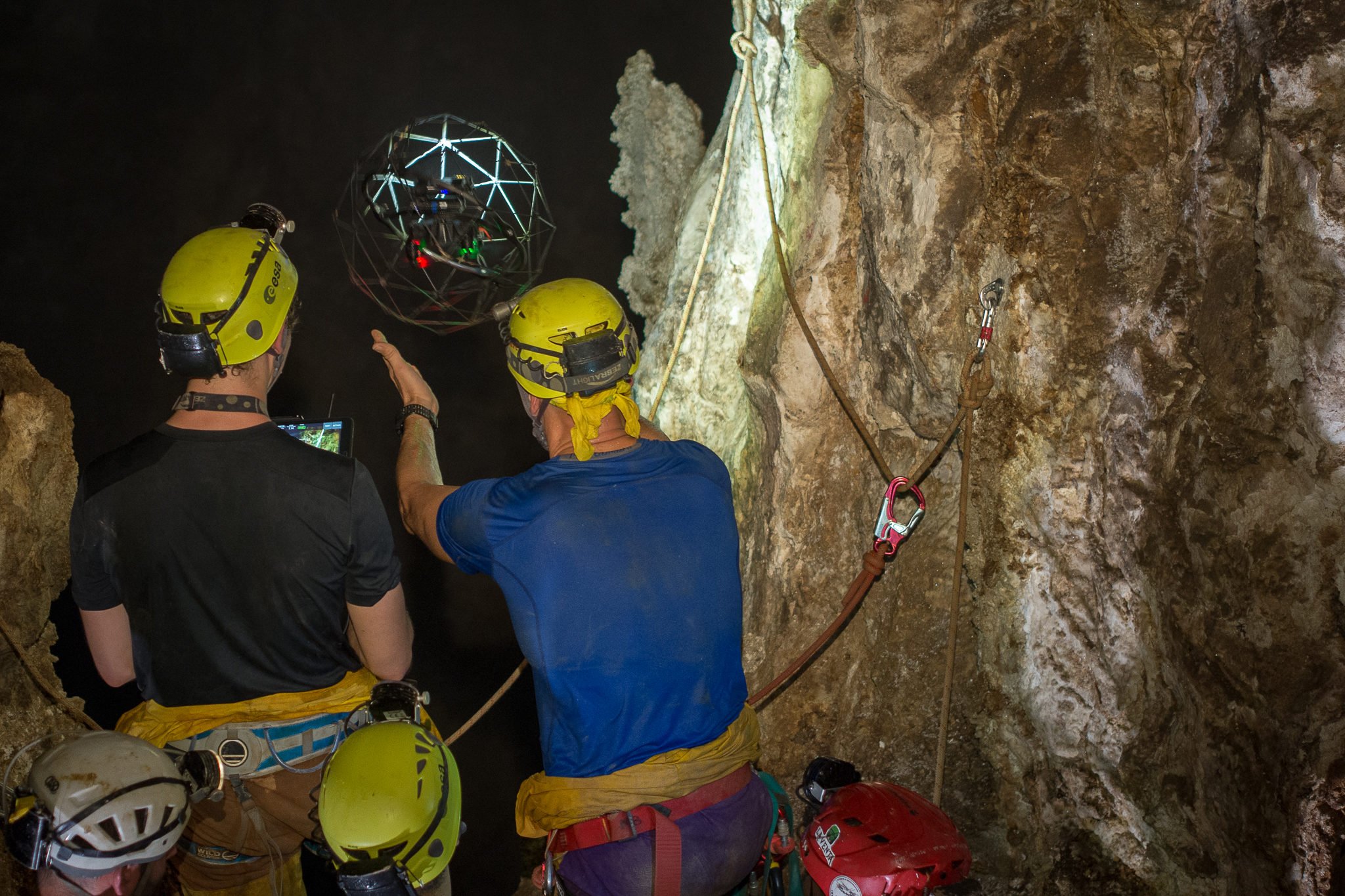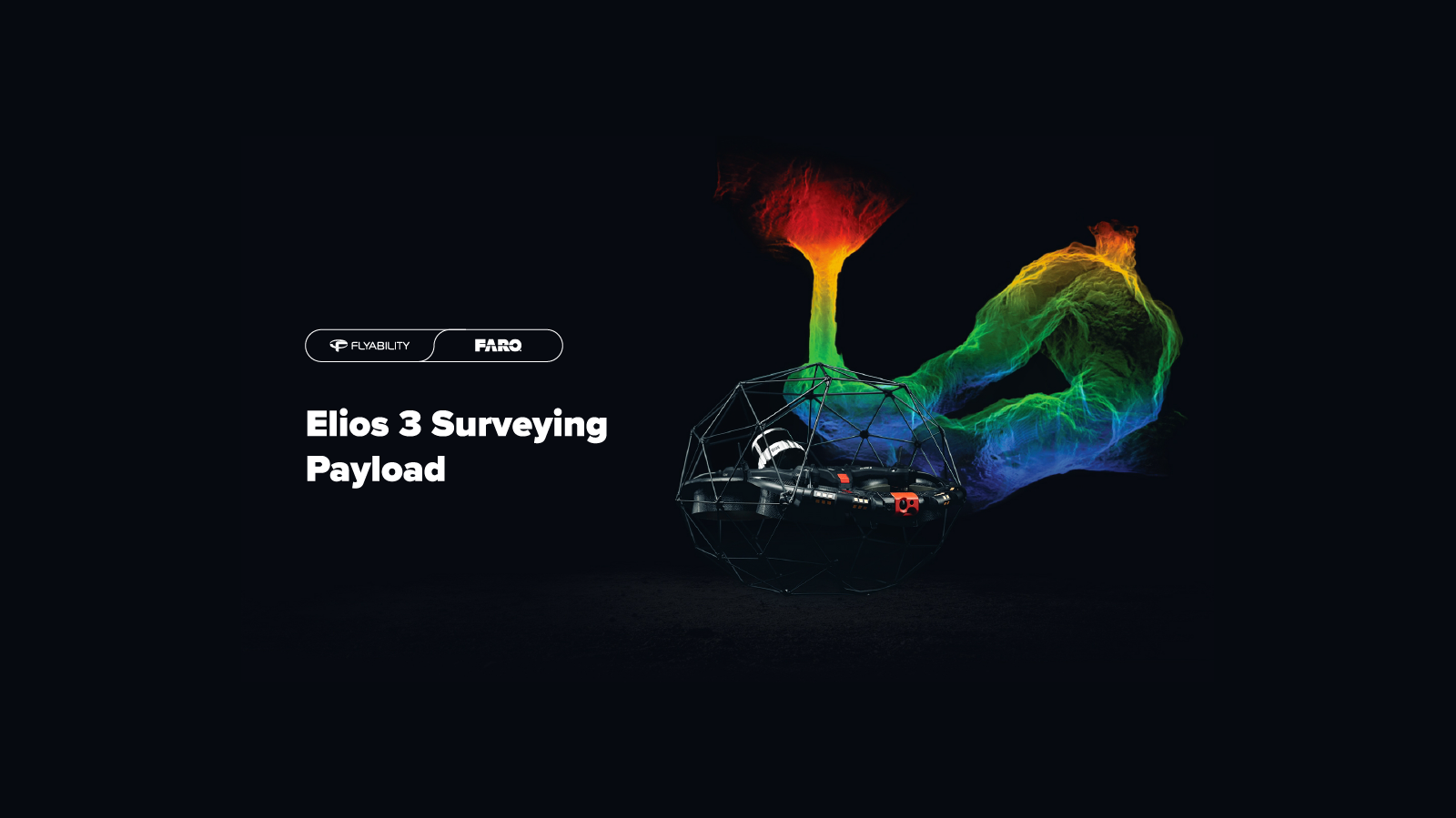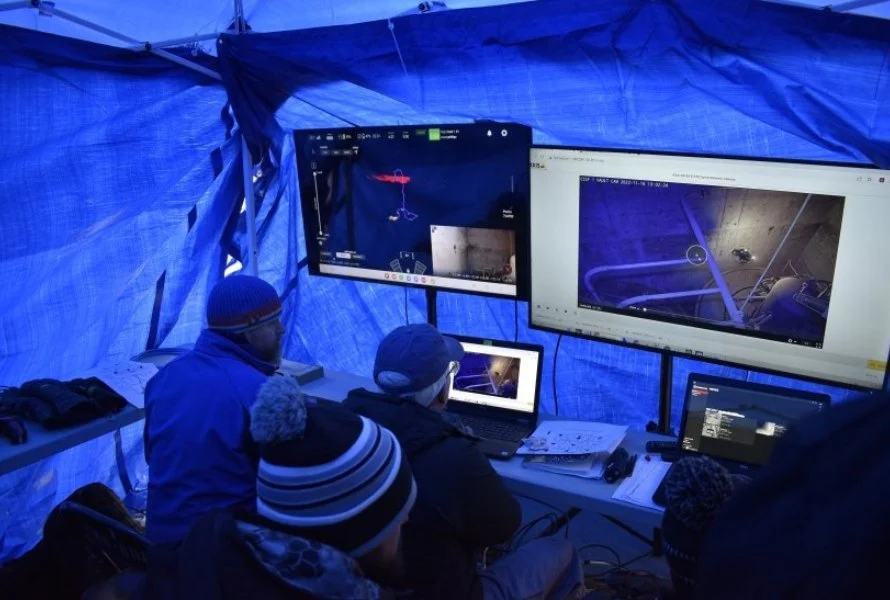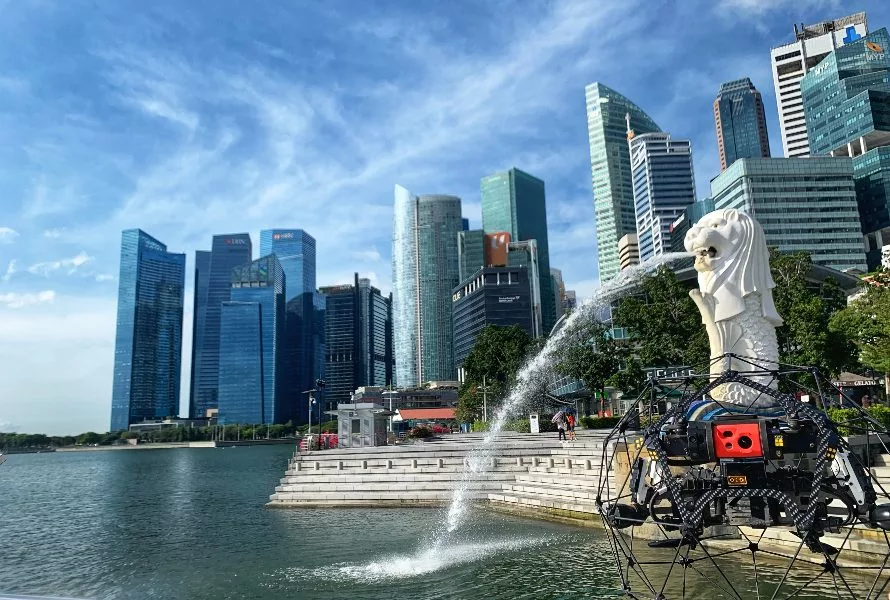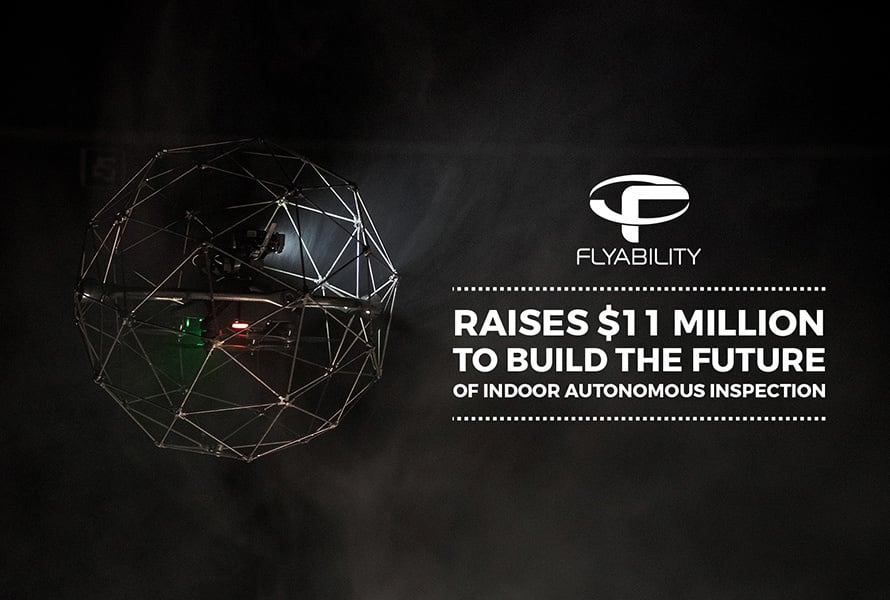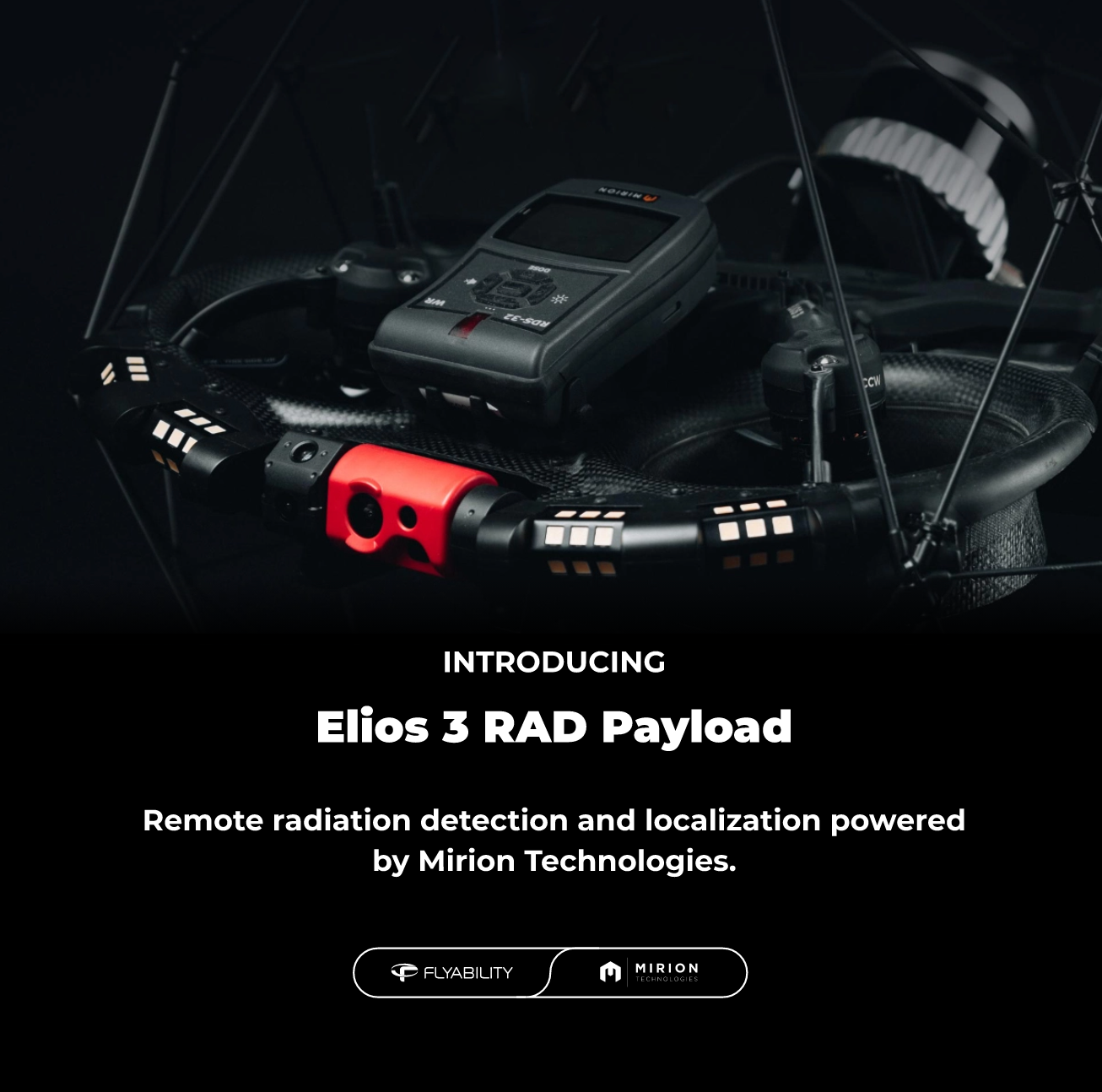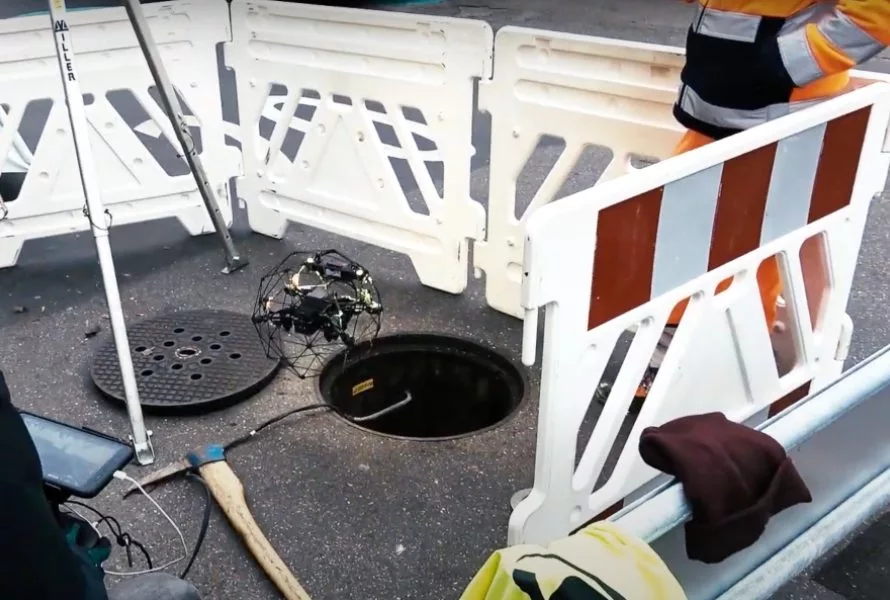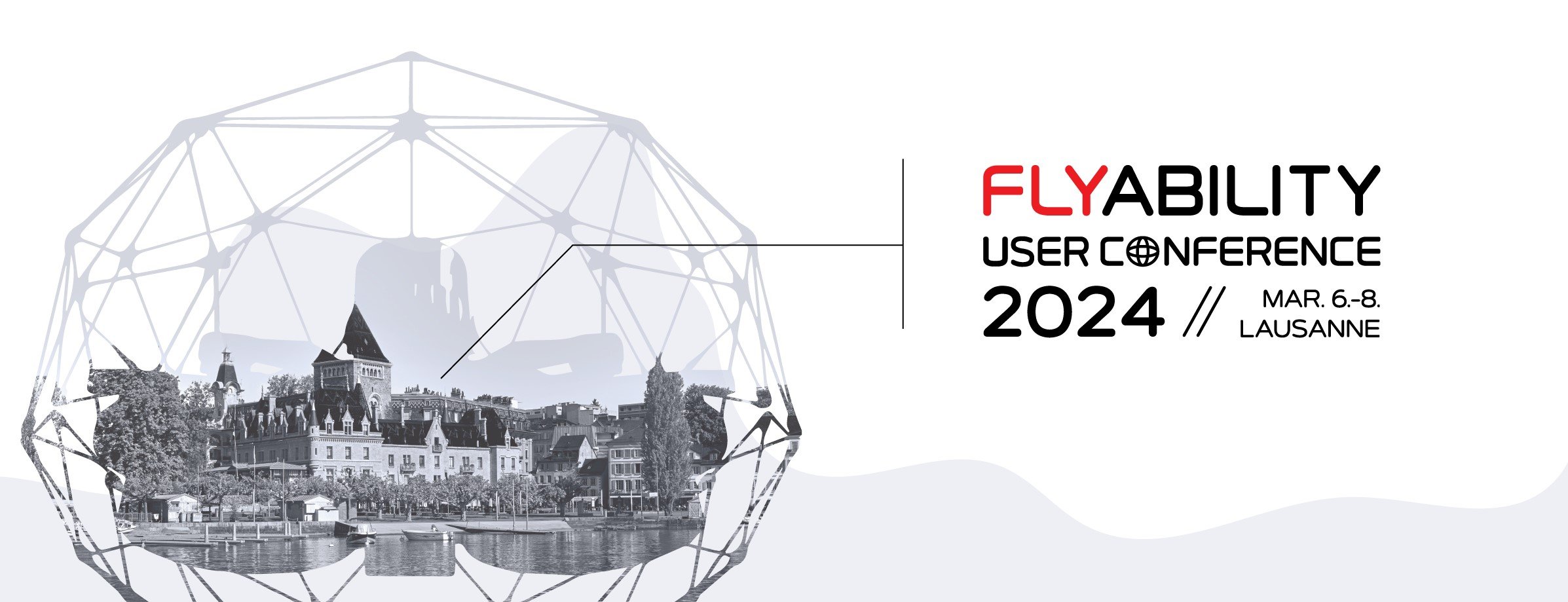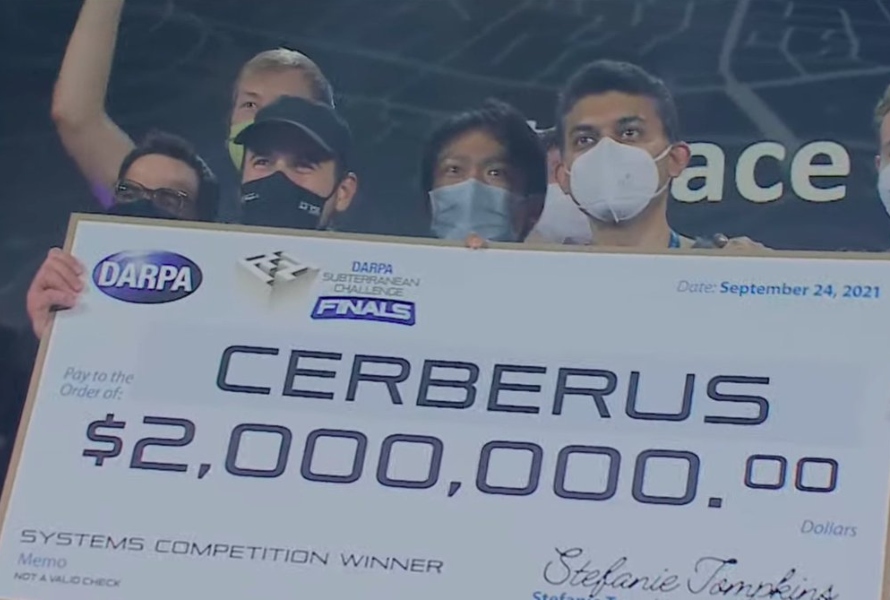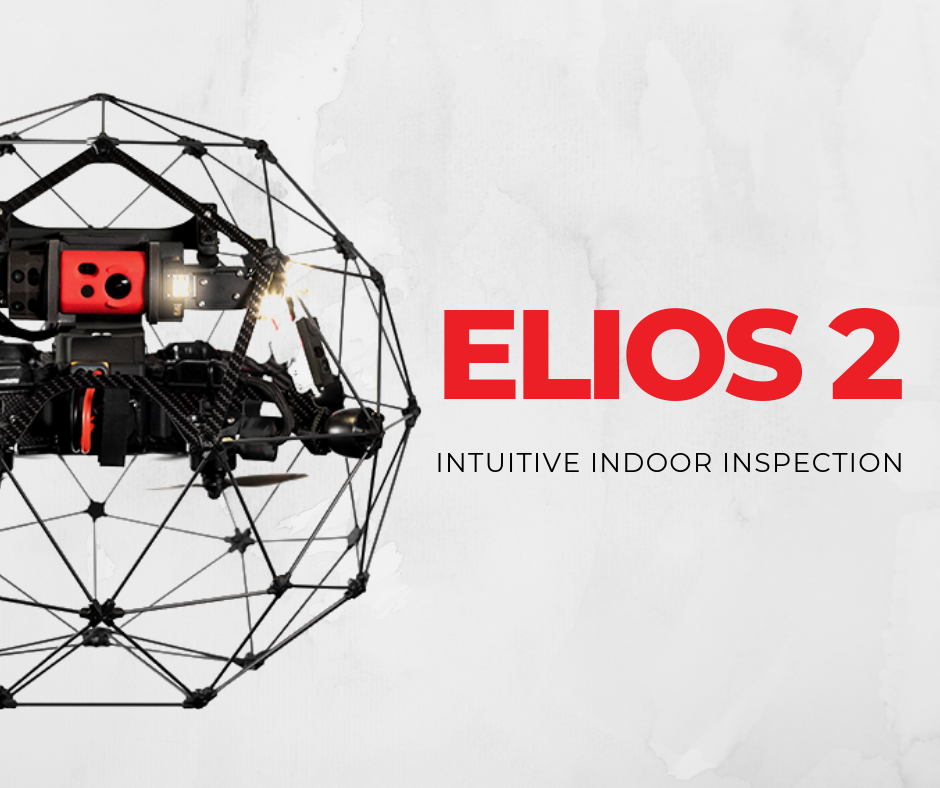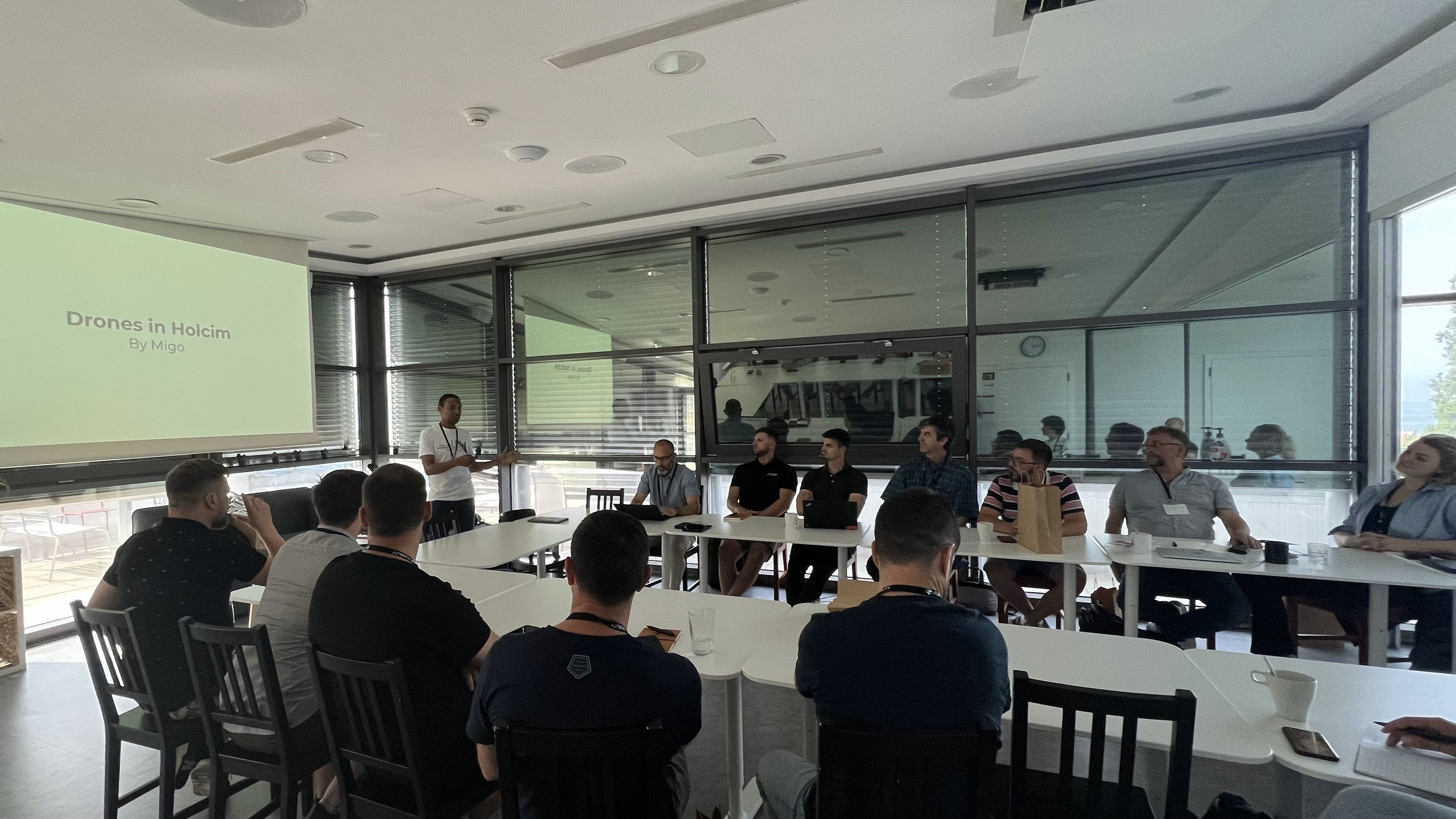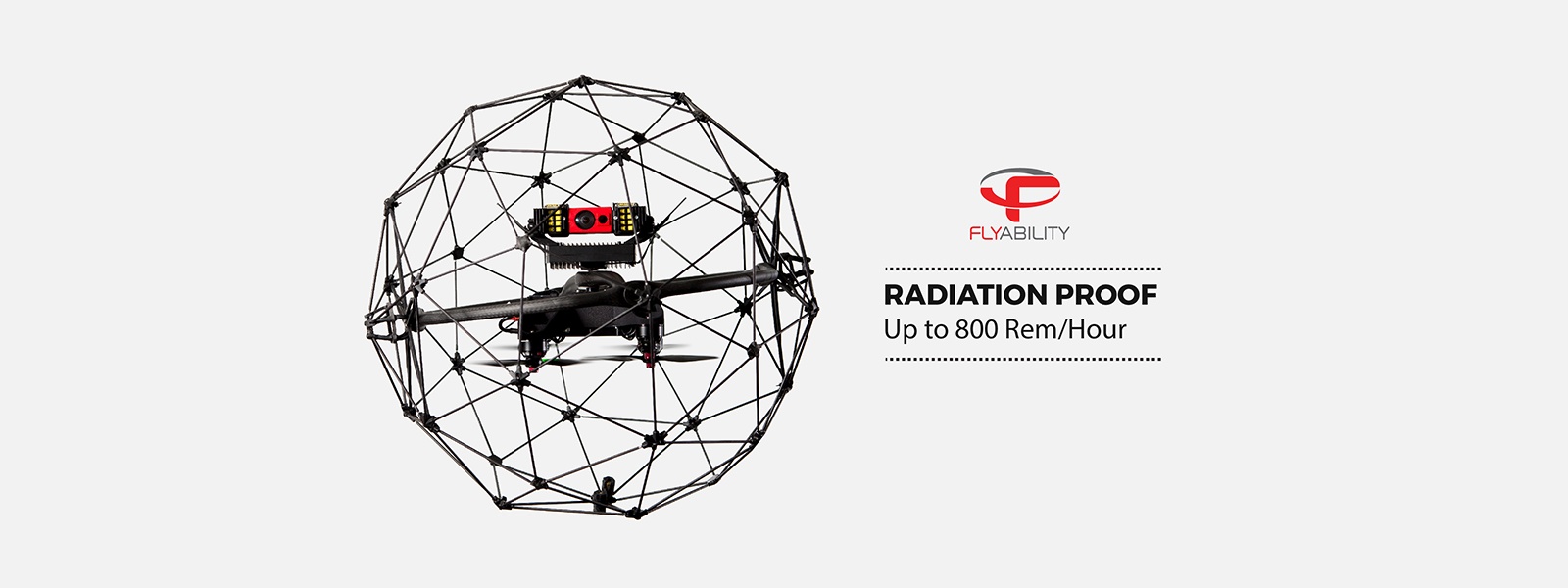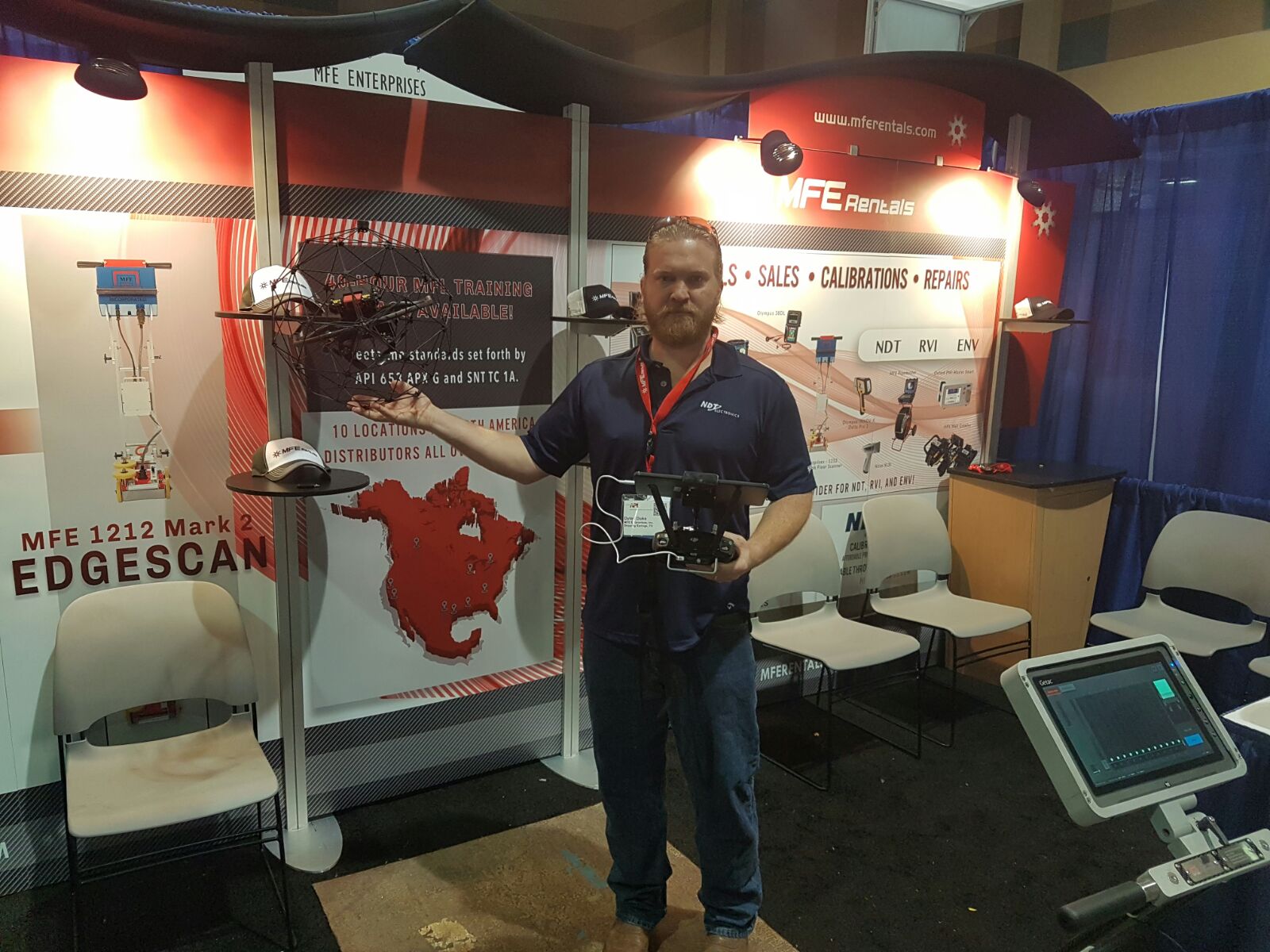What Is LiDAR?
LiDAR is a remote sensing technology that measures distance using high powered lasers and light energy.
To do this, LiDAR instruments target an object with a laser, measure the speed and intensity of the reflected signal, and then use this data to calculate the exact distance between two points. This positioning information is then used to create detailed 3D models.
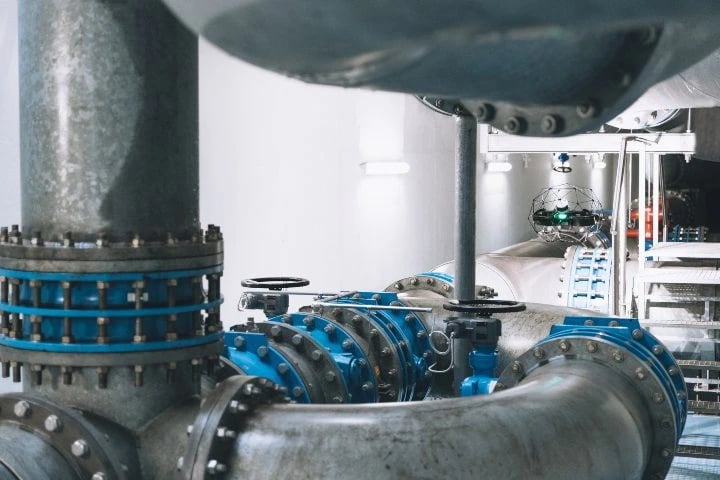
Flyability's Elios 3's LiDAR sensor glows green as it flies through a water treatment plant
LiDAR is used across a number of industries and has airborne, terrestrial, mobile, and underwater applications.
The ability to place a LiDAR payload on a drone has also made the imaging technology incredibly useful for work in which human workers may be at risk.
In this comprehensive guide to LiDAR technology, we’ll cover:
What Is LiDAR?
LiDAR stands for Light Detection and Ranging.
It is a type of data collection that supports 3D modeling with the use of high powered lasers and other forms of light energy to measure a target from afar.
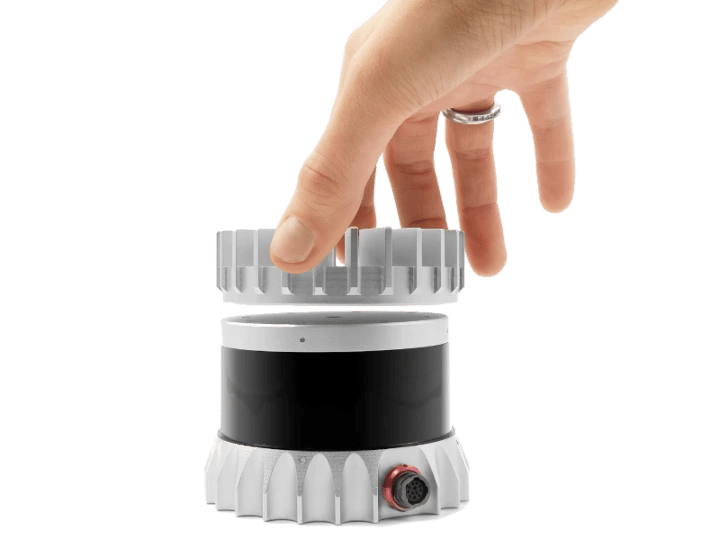
An Ouster OSO-32 LiDAR sensor
LiDAR traces its roots back to the early 1960s, when lasers were first invented and scanners using them were mounted to planes. Back then, the word LiDAR wasn’t even an acronym—it was just a quick combination of the words “light” and “radar.”
At first, LiDAR was mainly used to help make maps of small rivers and streams. But in the 1980s, with the emergence of GPS, LiDAR became an integral tool in collecting large-scale geospatial data and in creating topographical maps.
The LiDAR sensors of the 1980s were large, clunky, and fairly inaccurate. They were also almost exclusively mounted to large, piloted airplanes, and their operation was manual, expensive, and did not always provide a good return on investment.
Today, LiDAR technology is cheaper, smaller, and more accessible than ever before, leading to its proliferation across dozens of different industries and fields. In fact, recent iPhones even have LiDAR scanners that can create 3D models from up to 4.5 meters (15 feet) away.
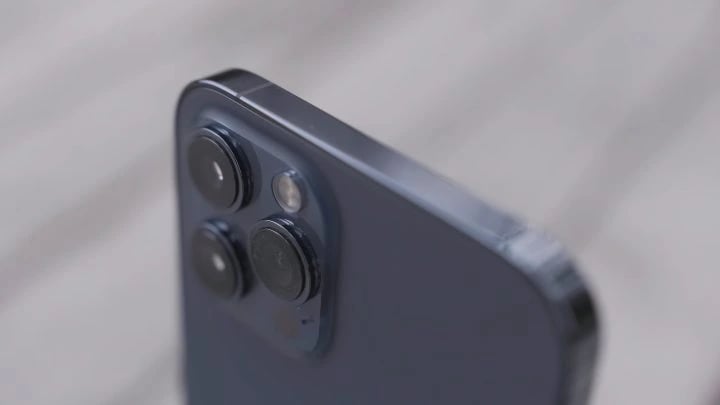
LiDAR sensors along with visual sensors on a smartphone
Clearly, LiDAR technology has come a long way in the 60 years since it was invented. But how exactly does it work?
How Does LiDAR Work?
Whether it’s mounted to a plane, attached to a drone, or held in the palm of your hand, all LiDAR systems measure distance by shooting a precise, high-powered laser at a target and closely measuring the pulse that bounces back.
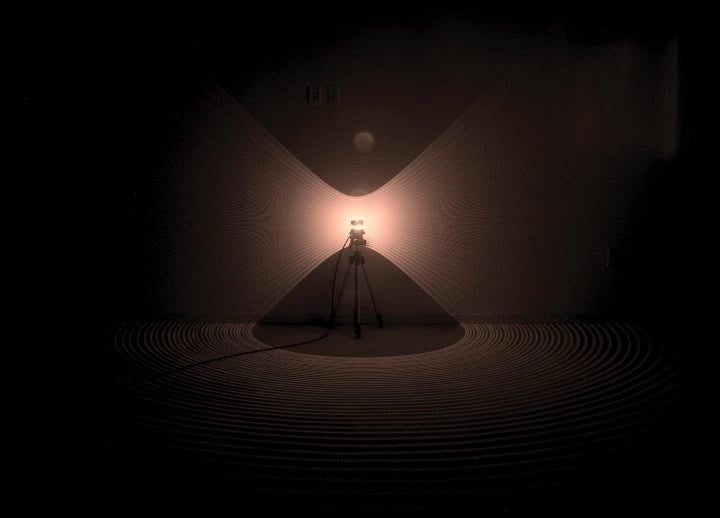
An infrared photo of a LiDAR sensor | Credit: Ouster
LiDAR is actually quite similar to how radar and sonar measure distance, except instead of using radio or sound waves, LiDAR systems use light. By taking into account the direction the light was sent, the position of the LiDAR scanner, and the distance between two points, LiDAR payloads are able to derive the exact 3D positions of every point from which signals return, or bounce back.
There are three primary components of every LiDAR instrument:
1. The Laser
While the color and intensity of the laser varies depending on the type of data being collected, every LiDAR payload has a high-powered laser attached. These lasers pulse beams of light at an object, and those objects—whether a tree, a rock, a building, or the earth’s surface itself—reflect the laser back to be collected.
2. The Scanner
These reflected pulses must be received by the LiDAR system in order to be accurately measured, and this is the job of the scanner (also called a sensor or receiver).
Here too there is much variation depending on what is being measured, and the specific types of lenses and optics used in a LiDAR scanner vary from payload to payload. A beam splitter or a hole mirror are two common devices used to collect return signals.
3. Global Positioning System
The LiDAR system must know exactly where it is positioned in order to measure the return signal accurately, so almost all LiDAR systems have state-of-the-art positioning and navigation systems in order to help determine the absolute position and orientation of the sensor.
There are other hardware considerations to note when choosing or designing a LiDAR payload–including the battery, imaging system, data collector, aircraft, and more–but these will all vary drastically depending on the application of the specific LiDAR instrument.
LiDAR Formula
The entire process of bouncing a beam of light or laser off an object, receiving the returned signal, and calculating its absolute position in space can be represented mathematically using this formula:
d = c * t / 2
In the formula, each letter represents:
- d is the distance
- c is the speed of light
- t is the time of the flight
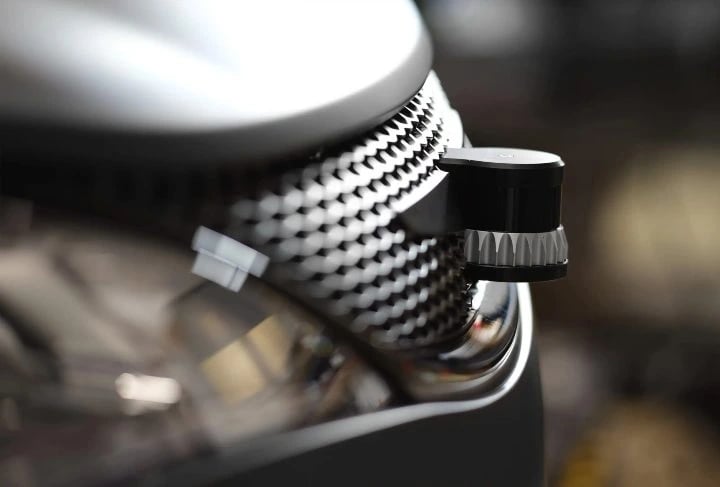
An Ouster LiDAR sensor attached to a car
Benefits of LiDAR
There are a number of benefits to LiDAR, and in almost every instance LiDAR is a better alternative to other 3D modeling systems, like photogrammetry.
First, LiDAR is incredibly accurate, with some systems able to target objects as nebulous as a cloud or as small as individual molecules. Photogrammetry, which takes hundreds of thousands of photographs and synthesizes them into one model, is much more data intensive than LiDAR and rarely as accurate.
Another benefit of LiDAR is its ability to work in low light or areas of little visibility.
Photogrammetry systems are rendered inoperable by dark spaces like mines or dark skies, but LiDAR technology has no problem working in such environments since it operates with infrared lasers.
This is a major benefit of using LiDAR over other remote sensing technologies because, as we will see below, many of the industries using LiDAR today are involved in safety or emergency services. In these instances, the ability to capture accurate measurements regardless of environmental circumstances can be vital to saving lives and keeping civilians safe.
There are other benefits to LiDAR as well:
- The ability to automate large portions of work
- The ability to collect data from a wide range of sources
- The increasingly lower cost as technology advances
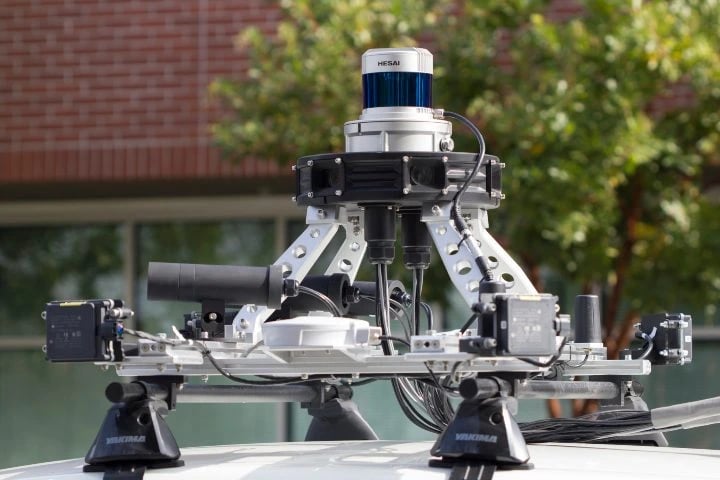
A LiDAR sensor mounted to a self-driving car
Types of LiDAR
LiDAR systems and instruments can be categorized according to a number of parameters.
Laser Type
One major distinction between different types of LiDAR is the kind of laser used. While there are hundreds of different lasers of varying strength and range, one main differentiator is whether the LiDAR laser is topographic or bathymetric.
- Topographic LiDAR—the more common type, uses a near-infrared laser to map land, trees, buildings and more.
- Bathymetric LiDAR—the less common type, uses water-penetrating green light to measure things like seafloor depth, stream height, and riverbed elevations.
Orientation
Another way that different types of LiDAR systems can be categorized is by their orientation—in other words, where is the laser and sensor positioned in relation to the object it’s measuring?
- Oriented to nadir—looking down. Example: LiDAR altimeters.
- Oriented to zenith—looking up. Example: some atmospheric LiDAR instruments oriented to zenith.
- Oriented laterally—looking laterally. Example: many self-driving cars using LiDAR sensors that are oriented laterally.
Orientation is a useful way to categorize LiDAR technology as a whole, and can quickly help distinguish between LiDAR systems with vastly different functions.
Platform
Another helpful distinction between different LiDAR instruments is what platform the system is designed to be placed on. That is, will the LiDAR technology primarily be used aerially or terrestrially?
Depending on the answer, LiDAR solutions will differ significantly in the tech used, the area to be captured, the range of the sensor, and more.
Aerial LiDAR systems can be broken down even further into different types of LiDAR, including drone-based LiDAR, helicopter and airplane LiDAR, and spacebound satellite LiDAR.
This distinction is helpful, as it categorizes LiDAR types not based on the function of the technology itself, but on the type of vehicle handling the payload.
LiDAR Uses and Applications
Now that we have an understanding of what LiDAR is, how it works, and the different types of LiDAR available, we can take a close look at the many different industries that are implementing LiDAR technology today.
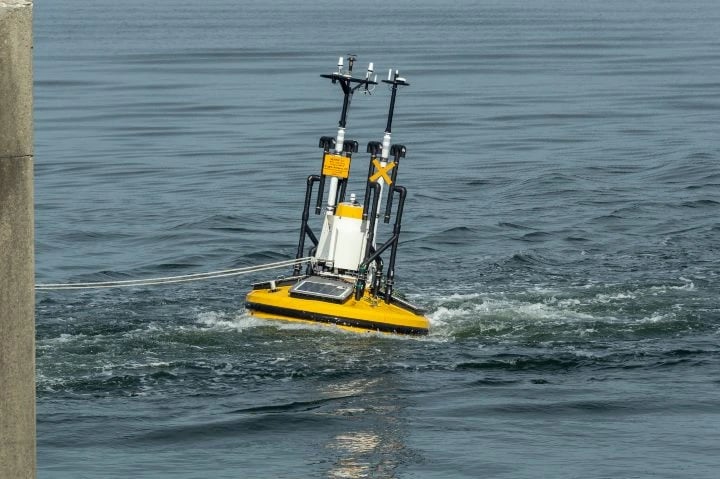
A LiDAR sensor mounted on an aquatic platform
Here are 12 of the most common LiDAR uses and applications.
1. Accident Scenes
Whether it's a late night interstate pileup or a crash on snowy rural road, LiDAR systems can gather sweeping amounts of visual details in a single pass before the medics even arrive, allowing emergency services to immediately focus on saving lives instead of assessing the situation.
Maps, models, and other data gathered by LiDAR tech can also be used in court as neutral, data-driven records that help determine the cause or effects of an accident. Sanitation crews and wreckers working to clear the fallout of an accident may also benefit from such models.
2. Agriculture
LiDAR technology can help keep track of everything on a farm. Whether it's identifying areas that yield more crops, measuring flood waters to help determine the position of levees, or tracking a wandering herd of cattle, LiDAR and agriculture are a great match. Certain LiDAR setups can even detect individual insects on a farm.
3. Atmosphere
When it comes to matters of the atmosphere, LiDAR scanners, especially ones that operate aerially, have a number of benefits and use cases.
Some of these include pollution modeling, cloud profiling, meteorology, and assistance in measuring the density and distribution of various gasses and molecules.
4. Archeology
In 2017, data obtained by certain LiDAR drone sensors helped to identify a sprawling road system in the El Mirador river basin, a vast plot of land deep within the jungles of Central America.
This is far from the only example in which LiDAR scanners assisted in archaeological digs, but these roads, used by the Mayans as early as 600 B.C.E., may have never been discovered if not for the accessible nature of LiDAR and the technology’s unique ability to gather data through dense and wide tree top canopies.
5. Conservation
A number of US States are using LiDAR enabled technology to better maintain and conserve the natural resources within their borders. LiDAR drones and LiDAR scanners are being used to measure everything from forest heights to sand dune density, but are especially useful in water conservation.
Using high fidelity models of flood plains and river basins obtained by LiDAR surveys, state and local governments can both better prepare for natural disasters and more accurately predict their yearly resource use.
6. Inspections
Drones or uncrewed aerial vehicles equipped with LiDAR payloads are able to enter into areas that are either dangerous or impossible for human workers to get access to, and this ability can greatly help in the field of inspection and maintenance.
From measuring the amount of vegetation growing around a power line to performing initial surveys of construction sites, equipment using a LiDAR scanner can greatly reduce both the time and cost of a manual survey or inspection.
7. Insurance
The ability to survey huge sections of urban areas in the matter of minutes makes claim assessment, one of the most expensive and time intensive aspects of the insurance industry, incredibly efficient.
Using LiDAR scanners to assess the damage of a flood or better understand the path of a tornado means that insurance companies around the world can give accurate, cheaper quotes based on data that’s accurate within half a foot or less.
8. Forestry
LiDAR is especially good at measuring the height and location of individual trees within a large, dense forest, and the technology’s ability to narrowly work its way around treetops also makes it perfect for collecting information on the ground.
Traditional surveying methods for forests are inefficient, time-consuming and nearly impossible to use without light. but with LiDAR equipped technology, foresters can quickly and accurately map miles and miles of forest like never before. This has implications both for conservation efforts and for industries that rely on the world’s forests, like the paper, syrup and furniture business.
9. Law Enforcement
Since the turn of the century, police departments across the world have actually been trading in their radar guns for LiDAR guns, using the accurate and precise technology to better measure the speed of passing cars.
However, the use of LiDAR in law enforcement goes far beyond speeding tickets; officers and military personnel alike can use LiDAR sensors to learn about other combatants, examine enemy areas, or even get a bird’s eye view of a hostage situation.
10. Mining
In the mining industry and geological sciences, LiDAR technology can be used to assess safety after planned detonations, measure ore volumes and ore extraction spaces, and detect and study various kinds of fault lines.
11. Transportation
LiDAR scanners in the transportation industry can help in every step of the process, from the planning of parking areas and railway lines to on the fly route adjustments due to traffic congestion.
12. Self Driving Cars
Autonomous vehicles use lateral LiDAR systems to help with obstacle detection and collision detection. Certain types of LiDAR systems can also aid in cruise control, navigation and parking.
We are hosting demonstrations throughout the world to showcase our new indoor inspection drone.
Sign up to see the Elios 3 live in a location near you.


